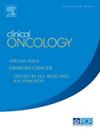Reirradiation in Paediatric Tumours of the Central Nervous System: Outcome and Side Effects After Implementing National Guidelines
IF 3.2
3区 医学
Q2 ONCOLOGY
引用次数: 0
Abstract
Aims
Reirradiation is becoming more frequently used in paediatric tumours of the central nervous system (CNS). To fill the void of clinical guidelines, the Swedish Working Group of Paediatric Radiotherapy compiled consensus guidelines on reirradiation in 2019. The aim of this study was to evaluate the outcome of children reirradiated for CNS tumours since implementing the guidelines.
Material and methods
All children in Sweden who were reirradiated for CNS tumours between 2019 and 2023 were retrospectively analysed. Data were collected on patient and treatment characteristics, outcome, and severe side effects. Radiation treatment plans were reviewed, and cumulative doses to organs at risk at reirradiation were extracted following rigid registration.
Results
Thirty-one patients (male 55%, female 45%) were included, and the median age at start of reirradiation was 10.2 years. The median time between primary irradiation and reirradiation was 19 months (range 2–141). The most common treatment intent at reirradiation was palliative (68%), followed by curative (32%). With a median follow-up of 8.5 months (range 0–49), the median overall survival from the end of reirradiation was 11.4 months. In the 8 patients where the treatment goal at reirradiation was symptom relief, 6 patients (75%) had relief of symptoms. The median cumulative near maximum doses (D2%) to the brain, brainstem, and chiasm/optic nerves were 71 GyEQD2 (range 44–102), 72 GyEQD2 (range 0–94), and 40 GyEQD2 (range 0–76), respectively. Following reirradiation, only 2 patients had grade ≥3 side effects. One with transient neurological deficit and one with rapid onset of blindness that persisted.
Conclusion
The implementation of national guidelines has harmonised the way paediatric patients are reirradiated for CNS tumours in Sweden. A structured follow-up shows that severe side effects are rare despite high cumulative doses to organs at risk, and that reirradiation can offer relief of symptoms and/or local control for selected patients.
儿童中枢神经系统肿瘤的再照射:实施国家指南后的疗效和副作用。
目的:再照射越来越多地用于中枢神经系统(CNS)的儿科肿瘤。为了填补临床指南的空白,瑞典儿童放疗工作组于 2019 年编制了再照射共识指南。本研究旨在评估自该指南实施以来,中枢神经系统肿瘤再照射患儿的治疗效果:对2019年至2023年期间瑞典所有接受中枢神经系统肿瘤再照射的儿童进行回顾性分析。收集了有关患者和治疗特点、结果和严重副作用的数据。对放射治疗计划进行了审查,并在严格登记后提取了再照射时风险器官的累积剂量:共纳入 31 名患者(男性 55%,女性 45%),开始再次照射时的中位年龄为 10.2 岁。初次照射与再次照射之间的中位时间为 19 个月(2-141 个月)。再照射时最常见的治疗目的是缓解(68%),其次是治愈(32%)。中位随访时间为 8.5 个月(0-49 个月),再照射结束后的中位总生存期为 11.4 个月。在以症状缓解为再照射治疗目标的 8 名患者中,有 6 名患者(75%)的症状得到缓解。大脑、脑干和脊束/视神经的累积近最大剂量(D2%)中位数分别为71 GyEQD2(范围44-102)、72 GyEQD2(范围0-94)和40 GyEQD2(范围0-76)。再次照射后,只有 2 名患者出现了≥3 级的副作用。一名患者出现短暂的神经功能缺损,另一名患者迅速失明并持续存在:结论:国家指导方针的实施统一了瑞典儿童中枢神经系统肿瘤患者的再照射方式。有组织的随访显示,尽管对高危器官的累积剂量很高,但严重副作用却很少见,而且再照射可为选定的患者缓解症状和/或控制局部病情。
本文章由计算机程序翻译,如有差异,请以英文原文为准。
求助全文
约1分钟内获得全文
求助全文
来源期刊

Clinical oncology
医学-肿瘤学
CiteScore
5.20
自引率
8.80%
发文量
332
审稿时长
40 days
期刊介绍:
Clinical Oncology is an International cancer journal covering all aspects of the clinical management of cancer patients, reflecting a multidisciplinary approach to therapy. Papers, editorials and reviews are published on all types of malignant disease embracing, pathology, diagnosis and treatment, including radiotherapy, chemotherapy, surgery, combined modality treatment and palliative care. Research and review papers covering epidemiology, radiobiology, radiation physics, tumour biology, and immunology are also published, together with letters to the editor, case reports and book reviews.
 求助内容:
求助内容: 应助结果提醒方式:
应助结果提醒方式:


